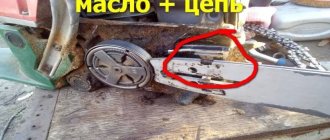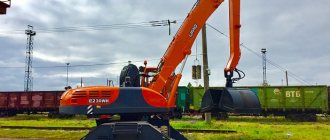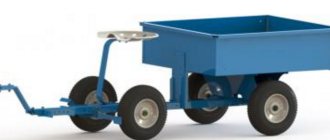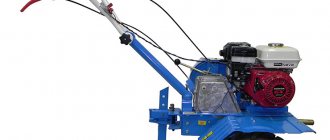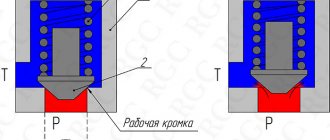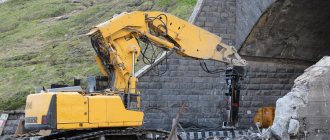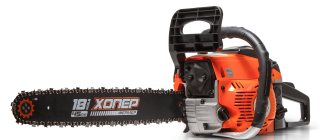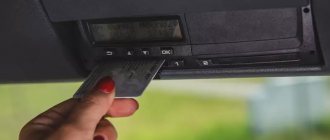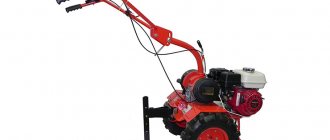Welding cast iron is very difficult, and not every specialist undertakes this work. However, it can be done even at home. Features of the process, preparation requirements, choice of consumables - this and much more is discussed in the article.
- Manual arc welding
Cast iron as a material is an alloy of carbon and iron. In addition to the main ones, the composition also contains additional components - alloying additives. This mixture is difficult to perform welding work. But despite the specifics, they can be performed even at home. There are methods to correct casting defects, wear or destruction of parts of a cast iron structure. Moreover, cast iron can be combined with steel parts.
Cast iron as a material
Cast iron is divided into two types. The lighter one is usually called white: at the break it has a light gray almost white color. Carbon in its composition is presented in the form of cementite. This material is characterized by high fragility and cannot be machined. It is rarely used for the production of various types of products and cannot be welded.
After additional processing of white cast iron, namely long-term melting at a temperature of 1000 degrees Celsius, another type of cast iron is obtained - gray. Unlike the first, the product is more technologically advanced and can be machined and welded. It is used to produce a wide range of parts that are resistant to vibration and mechanical stress. Malleable cast iron is in demand in the production of agricultural machinery, machinery, machine tools, ships and many other equipment.
| Type of cast iron | Carbon content | Form of carbon | Properties | Marking |
| grey | 3,2-3,5 | Flake graphite | Low shrinkage, pours well, high fluidity in the molten state | SCh-10 SCh-35 |
| white | 2,14-6,67 | Cementite (iron carbide) | Hardness, brittleness, high shrinkage, cannot be machined | |
| malleable | 2,4-3,0 | Flaked graphite | Plasticity, good mechanical properties, corrosion resistance | KCH33-8 |
| high strength | 3,2-3,8 | Nodular graphite | Fluidity, almost no hot cracks, low shrinkage | HF60-2 |
If a certain amount of alloying additives is added to the composition of a malleable material, high-strength cast iron will be obtained. The material is used in the production of high-pressure pipes, critical parts for the automotive industry and mechanical engineering. When fractured, the color of such cast iron will have a silver-gray tint. Carbon in its composition is represented by graphite. This type is widely used as a structural material, processed by cutting turning tools, has wear resistance, excellent casting performance, vibration resistance.
Features of cast iron welding
The material is endowed with specific properties that influence the charka process. The main ones:
- Rapid cooling results in a so-called bleaching effect. A thin film of white cast iron, unsuitable for machining due to its high fragility, forms on the surface.
- Incorrect temperature setting, which causes many microcracks to form near the seam.
- During welding, a large amount of gases are formed in the pool, which can lead to increased porosity of the welded joint.
- Cast iron has high fluidity, which complicates the formation of a weld, since a melt of such consistency quickly flows out of the bath.
- The metal has a high heat capacity, due to which it heats up and cools unevenly. In combination with fragility, “disparity” in temperatures leads to the formation of cracks.
- Oxidation of silicon initiates the formation of refractory oxides. As a result, lack of penetration is formed.
Despite a decent list of difficulties, welding cast iron is a popular and very common method of repair, as well as the manufacture of new welded-cast products. But welders need to carefully analyze the initial data and carefully select the welding method and consumables. The quality of the future welded joint and comfort during the work depend on this.
Introduction
Each of us has that old, heavy cast iron frying pan, which, if desired, could easily become a murder weapon, to which everything sticks to death, and at the same time it will not fail due to the material and will torment you for many more years.
Of course, many compounds have been invented in the world that are not inferior to metal, but at the same time, cast iron is a sign of quality, so it will not lose its popularity.
So whether you are a professional or just a jack of all trades at home, you will have to come face to face with the process of welding cast iron, it could be a large industrially important structure, or just your wife's frying pan.
Our article will reveal several of the most important questions about what properties this metal has, how to weld such metal and at the same time do everything professionally.
Preparation
The presence or absence of defects largely depends on how competently the preparatory work is carried out. Cracks in cast iron have a thin and deep structure. To get rid of them, you need to cut the edges to the full depth. For these purposes, you can resort to simple mechanical methods - grinding or cutting, or you can use heat treatment - arc or oxygen cutting.
The length of the groove should be approximately 5 millimeters longer than the visible part of the crack on each side. Closer to the edge, the cutting groove should become shallower so that it eventually comes out flush with the surface of the workpiece. The depth of cutting through defects is 1-2 mm less than the thickness of the walls of the product. Regarding non-through cracks, it’s the other way around: the cutting should exceed the depth of the crack by at least 1-2 mm.
Proper cutting of edges eliminates overheating of cast iron. If everything is done correctly, the metal will heat up evenly throughout the entire area. To do this, you need to ensure that the bevel of the edges is exactly 45 degrees. It is important that the edges are free of sharp corners. It is advisable to clean the surface with sandpaper, a sandblaster, a grinder or a regular metal brush. If some contaminants cannot be removed mechanically, then you can resort to heat treatment.
Cast iron parts with thin walls are welded using graphite molds. They serve as a lining. Thanks to this technique, the temperature is evenly distributed throughout the entire volume and the original shape of the workpiece is preserved.
cutting
There are 2 types of cutting cast iron - thermal or mechanical. Let's consider several ways:
- cutting with a grinder is a simple method;
- if necessary, cut pipes using pipe cutters;
- reciprocating saw;
- cutting with an electrode;
- oxy-fuel cutting;
- plasma cutting.
There are many options; at home, an angle grinder is most often used.
Cast iron welding technology
There are two widely used technologies for welding cast iron parts. They are divided depending on the temperature regime of the process, as well as the presence or absence of preheating of the workpieces.
hot
The method was developed for industrial production. It is of little use for home workshops, since it will not be possible to heat the workpieces to a temperature of 600-650 degrees Celsius in the garage without special equipment. Preheating technology makes it possible to eliminate the formation of cracks in the weld.
It is important to ensure uniform heating of the workpieces. It is fundamentally important to avoid temperature differences between the main product and the weld seam. Otherwise, there is a high probability of a fault. Before heating, the parts are fixed in the desired position. This is necessary in order to avoid internal stress, which can lead to cracks.
There is no need to overheat the workpieces. If the preheating temperature is raised to 750 degrees Celsius, the cast iron will simply begin to melt.
Semi-hot
The process is completely identical to hot pre-preparation. The only difference is maintaining the temperature. In this case, the workpieces are heated to a temperature of 400-450 degrees. The technology is used both in production and in small workshops.
Cold
Pre-heating of the workpieces is not required. Technology is used everywhere, including in everyday life. It is justified in the case where there is no equipment for preliminary preparation, and cast iron connections are one-time or irregular in nature. The quality of the weld is low. The reliability of the welded joint can be improved by using special electrodes.
Cleaning parts
The environment in which the casting was located affects weldability no less than the grade of the alloy due to the absorbent properties of cast iron. For example, exhaust manifolds that have been exposed to heated combustion products for many years will be very difficult to weld. Regardless of the brand of alloy and origin, it is necessary to completely clean the casting in the weld area - remove paint, grease, oil, and scale. It is helpful to gently and slowly heat the weld for a short period of time to evaporate volatile impurities from the area being treated.
Methods of welding cast iron
Manual arc welding
A universal option that allows you to work with all cast iron joining technologies - hot, semi-hot and cold. Consumables are selected for each method. Manual arc welding with preliminary preparation of parts is performed in several stages:
- joint preparation;
- heating of workpieces;
- welding;
- cooling.
To connect ductile cast iron, electrodes of the following brands are used: OZCh-2, MNCh-2, TsCh-4, OZCh-6. Gray cast iron is welded with consumables OZCh-2, MNCh-2, OZCH-4, OZCH-6, OZZHN-1 and OZZHN-2. High-strength grades are connected by OZZHN, MNCh-2, OZCh-3 and OZCh-4 electrodes. The welding seam is formed at high current settings in a continuous manner. What specific current settings should be depends on the brand of electrode.
Disadvantages of technology:
- the welding process is labor-intensive;
- it is quite difficult to heat the work area evenly;
- it takes a lot of time to complete the work;
- The equipment required for welding is expensive.
In cases where strict requirements are not imposed on the quality of the seam, you can resort to the technology of semi-hot or even cold welding of cast iron. You can choose ordinary steel electrodes. If possible, it is better to use cast iron electrodes with a copper and nickel base.
Non-consumable electrodes
A wide range of consumables is used - tungsten, graphite, carbon. Special rods containing nickel, copper, aluminum and other metals are suitable for the additive. The seam formation zone is protected by inert gases. Most often, argon or borax-based flux is used. Regarding technology, the best option is AC TIG - welding with tungsten electrodes in a protective environment from an alternating current source.
Cold, semi-hot and automatic
You can resort to MIG technology (performed in a protective inert gas environment) or MAG technology (in an active gas cloud). The process goes as follows. The wire is fed into the welding zone, where under the influence of high temperature it melts and forms a connecting seam. This occurs in a protected environment, as an inert gas is continuously supplied, isolating the connection from atmospheric air.
Semi-automatic hot welding is used in cases where it is necessary to make a welded joint of very high quality, when the joint must have good resistance to fracture and tearing. To minimize the number of microcracks, the weld should be cooled gradually.
Semi-hot welding technology is used in situations where the seam will experience relatively light loads during operation. Cold technology is suitable if no load is planned on the welded joint.
Semi-automatic welding involves the continuous supply of consumables to the work area. This makes it possible to reduce the time spent on work. In the case of connecting cast iron parts using a semi-automatic machine, you can count on good and mediocre results.
Argon-arc
The TIG method is characterized by the complexity of the welding process. Argon is used as a shielding gas that insulates the working space and cuts off atmospheric air. The best option for filler material is aluminum-bronze or nickel rods. In cases where the welded joint will be exposed to high temperatures during operation, nickel additives and tungsten electrodes should be used.
TIG technology requires the performer to comply with a number of requirements:
- Before welding, the workpieces must be warmed up. This will reduce the number of cracks.
- A small alternating current is selected.
- To prevent overheating of the metal, it is necessary to connect in short sections.
- Each section should be forged (tapped with a hammer) to relieve the internal stress of the cast iron.
- At the end of the work, the weld should cool slowly.
Gas
It is important to heat the workpieces evenly before starting work. Therefore, preparation takes longer. Gradual, continuous heating reduces the likelihood of white spots developing. Edge processing is also required provided that their thickness exceeds 4 millimeters. A V-shaped bevel is made with an opening angle of 90 degrees.
The filler materials are cast iron rods. It is important to choose the right thickness. It is calculated using the following algorithm. The wall thickness of the workpieces must be divided in half. This will be the diameter of the rod. It may deviate from the obtained result by 1 millimeter in a larger direction. In addition, you need to use flux. Brands FSC-1, BM-1, FSC-2 are well suited. It is advisable to coat the additive with flux and add it to the weld pool. There should be plenty of material, since it performs a number of important functions:
- protects the weld pool from oxidation;
- increases the fusion of dissimilar inclusions;
- refractory oxides are converted into low-melting slags;
- melt fluidity increases.
The welding flame should be medium level. The connection is made in the down position. Large workpieces are processed with torches. To make the seam cool more slowly, it is covered with a layer of asbestos.
Electroslag (ESS)
The technology is used to connect parts made of gray cast iron and makes it possible to obtain a connection with satisfactory performance. Subject to the requirements of the technological process, the formation of pores, cracks, bleached areas and a number of other effects is eliminated. This method is optimal in cases where it is necessary to correct defects in cast iron castings, that is, in a situation where it is planned to deposit a large amount of metal. ESH is in demand for the production of massive structures made of high-strength cast iron. Cast iron plates and fluxes are used as consumables.
Laser
Safe method for high quality welding of cast iron. The technology makes it possible to obtain a crack-free welded joint. There are two varieties of it:
- With induction heating. Workpieces can be heated both beforehand and during operation. Using heat treatment, internal stress is relieved and the number of cracks is reduced; and the deposit turns out to be moderately soft, without excessive hardness. Naturally, the speed of work completion increases significantly.
- With additive. The method is effective for joining cast iron to each other and to structural, hardened, case-hardened steel. The method is used in the production of housings for various units, axles, gears, and other parts and assemblies in mechanical engineering and other industries.
Contact
The best option for working with pipes of different diameters. Pre-heating and melting of the joints of the workpieces to be joined is required. In this case, the formation of hardening structures is excluded. Welded joints are characterized by high density.
Plasma soldering
The structure of cast iron contains graphite, which makes adhesion between the solder and the surface of the material difficult. It needs to be removed. The easiest way to do this is with a sandblaster. Next, the surface at a temperature of 600-700 degrees Celsius is treated with flux No. 209 or 284. After this, the edges must be degreased with acetone, solvent or alkaline solution. Soldering can be done either with a soldering iron or with a gas torch using zinc chloride fluxes.
Light alloy solders, including tin-lead, are suitable for soldering at low temperatures. Copper and silver solders are suitable for high-temperature joints.
Electrical equipment, light, lighting
0 votes
+
Vote for!
—
Vote against!
Welding most types of steel at home is not particularly difficult if you have the necessary equipment. But if you plan to weld cast iron, which, along with steel, is the main structural material, then some difficulties may arise. The main failure when welding cast iron with your own hands is the low quality of the welded joint, which is explained by the intense hardening of the metal in the area of the weld - in other words, with an increase in the fragility of cast iron in this area and the appearance of cracks.
Cast iron as an alloy
Cast iron is known as an iron-carbon alloy and has a higher carbon content, ranging from 2 to 6%. This high carbon content means that the carbon in cast iron, unlike steel, is in a free state. Cast iron also contains silicon, sulfur, manganese and phosphorus, while there is more phosphorus and sulfur in cast iron material than in steel. Alloy cast iron contains additives of molybdenum, vanadium, nickel and chromium.
For example, carbon in the most common and used grayish cast iron exists in the form of graphite inclusions (remember that cast iron is smeared), which causes its poor weldability. Carbon may also be present as cementite. And depending on the type of additives, white, gray and malleable cast iron are distinguished.
The durability of ferrous metal, which includes cast iron, makes it the best material for creating grilles, gates, and home decoration items. Cast iron batteries and pipes, which today can be found in almost every home, are being replaced with modern options, and the price of welding cast iron is falling, but the value of this material does not decrease because of this.
Features of cast iron welding
Cast iron is a widely used structural material, which is characterized by its low cost, high machinability and good casting properties. But the high fragility and low strength of cast iron provoke failure during operation of many parts made from it.
Practicing welders believe that the poor weldability of cast iron is explained by the structure of the material at the fracture. Cast iron, which has a fine-grained fracture of a gray color, is easier to weld than cast iron, whose fracture has a coarse-grained structure and a dark color. Oiled cast iron and cast iron that have been exposed to brutal environments are virtually impossible to weld.
According to its chemical composition, physical properties and structure, cast iron is classified as a limitedly weldable alloy. Therefore, you should always take into account the following features of welding cast iron:
- Cast iron is a fluid material, so its welding is carried out in the lower position.
- When carbon burns out, pores form in the weld.
- Low plasticity of the metal leads to significant internal stresses and the appearance of hardening structures, which contribute to the formation of cracks.
- In the molten state, cast iron oxidizes to form a refractory oxide, the melting point of which is higher than that of cast iron.
The main difficulty that often accompanies electric welding and manual arc welding of cast iron is the occurrence of cold cracks. Specialists who work with this material carefully study the general composition of cast iron, the presence and proportion of carbon inserts. By choosing the right operating mode, you can avoid unpleasant consequences.
Technological measures that are aimed against the appearance of cracks include: preventing overheating of cast iron during welding, which is achieved by using small-diameter electrodes, low-current or random welding; reduction of stresses that arise as a result of shrinkage of weld metal or surfacing obtained by hot forging and a decrease in the volume of deposited cast iron.
Preparation for welding
Remember that immediately before welding, despite the method of welding cast iron, you must always prepare the edges of the parts that are connected, or cut out defective areas. The edges are beveled by hand using a bench chisel or a portable emery wheel with a flexible shaft. To avoid spalling, cast iron must be cut in thin layers, because the thickness of the chips should be no more than 0.8-1 millimeters.
Defective areas are cut down to clean metal using chisels, scrapers, cutters, drills, the dimensions of which depend on the size of the defect, the shape of the product and the need to create comfortable working conditions.
When cutting defective areas on cast iron parts, the following rules must be observed:
- They strictly cut along the crack.
- Non-through cracks are drilled at a distance of 10 millimeters from their ends with a drill whose diameter is 1-2 millimeters larger than the width of the crack, and they are cut down to the metal.
- Through cracks need to be cut from one or both sides, everything is determined by the thickness of the metal and the convenience of cutting.
- It is customary to weld a patch on cracks that are too close to each other, just like on holes.
When carrying out welding repairs of a hole, its edges must be smoothed by cutting off the sharp-angled protrusions with a chisel. Clean the surface of the part at a distance of 30 millimeters from the edges of the hole using an emery wheel. Then cut a patch of the desired thickness and shape from mild steel sheet. The patch should cover any hole on all sides by 15-20 millimeters.
To reduce the stresses that arise in the material during the process of welding cast iron at home, you need to bead the edges of the patch at an angle of 30 degrees. The patch is placed on the product with a flange to the cast iron material and overlap welded.
Types of cast iron welding
Electric arc welding of cast iron in production conditions is carried out using a hot method, in which the parts to be welded are preheated to a temperature of 650 degrees Celsius. There is also a cold method, when before welding the parts are heated only to a temperature of 250 degrees or not heated at all.
Hot welding of cast iron
The technology for hot welding cast iron is much more complex than the cold solution, but it helps eliminate the risk of cracks forming in the transition areas of the seams. When welding, try to evenly heat the surface of the product, because the cause of breaks and cracks is an excessively large temperature difference between the main element and the seam.
Before heating parts, they should be secured in a rigid frame to eliminate stress, which can lead to cracks during the welding process. If the heating of cast iron products is local in nature, then it is not necessary to use a rigid frame. It is customary to heat parts using induction heating units using industrial frequency currents. In addition, you can heat them in forges using flame torches or blowtorches.
When welding defects located at the edges of a part or welding through cracks, it is recommended to use graphite molds, which prevent liquid metal from flowing out of the weld pool. Molds are usually prepared using graphite plates, which are connected with a molding mixture consisting of quartz sand, which is moistened with liquid glass. Heating is done to ensure that the finished product is cooled evenly to prevent the occurrence of cracks.
Immediately before welding work, it is necessary to prepare the defective area - thoroughly clean it of dust and dirt and divide it to form cavities to ensure good access for manipulating the electrodes in the welding zone.
When working, strictly follow the technology of welding cast iron: observe the volume of molten cast iron during welding and stir it with the end of the filler rod or electrode. The part should be cooled gradually. The brewed area should not cool down too quickly; it should be covered with charcoal, dry hot sand, or cooled in an oven. Small parts cool down in 3 - 40 hours, larger parts - up to 5 days.
To protect and deoxidize the bath, boron-based fluxes are used - for example, technical anhydrous borax, calcined at a temperature of 400 degrees. This welding method is considered to be the most advanced in terms of quality today. However, hot welding of cast iron also has its disadvantages - difficult working conditions and a painstaking process.
Cold welding with electrodes
In ordinary conditions, when there is no special heating equipment, and the need to weld metal is sporadic, the procedure for cool welding of cast iron with special electrodes is suitable. For this purpose, OZCh-2 electrodes with a copper rod, which are coated with a special composition, as well as MNCh-2 electrodes, the rod of which is made of an alloy of nickel, iron, copper and manganese, are widely used.
The metal that is deposited with MNCh-2 electrodes is more amenable to cutting, but such electrodes are very scarce and expensive. OZCH-2 electrodes are cheap, they are easy to make without outside help by watching a video about welding cast iron.
Electrode OZCH-2 is a copper rod that has an electrode coating containing 50% metal powder, 27% marble, 7% fluorspar, 4.5% quartz, 2.5% ferromanganese, 6% ferrotitanium, 2.5% ferrosilicon , 0.5% soda. Don't be intimidated by the large number of components, because when making a homemade electrode, you can use a ready-made coating.
The procedure for creating electrodes for welding cast iron material is as follows. Clean the pieces of copper wire before coating the product and degrease it with any organic solvent. Chip the coating off iron welding electrodes by crushing it and combining it in a 1:1 ratio with steel powder or small iron filings.
After this, mix everything thoroughly with watery glass. Dip pieces of copper wire vertically into the resulting creamy mixture and slowly remove them from the coating mixture so that the excess has time to drain. In this case, the thickness of the coating layer should be at least 1.5-2 millimeters. The electrodes are first dried in a vertical position in air, and then calcined at a temperature of 250 degrees Celsius, using, for example, a stove oven.
Welding cast iron with homemade electrodes is carried out with a short arc, using a constant current - with reverse polarity. It is necessary to take breaks to cool the metal to a temperature of 50 degrees. With electrode diameters of 3-5 millimeters, the welding current reaches 90-180 Amperes. To ensure high-quality welding, the seam must be applied in small sections that are 30-50 millimeters long, and forged immediately after welding, this prevents the appearance of cracks in the weld.
If you don’t have any time to create electrodes, then remember that at home, good results are achieved by welding cast iron using combined copper-steel electrodes. The latter are made by winding a spiral of brass or copper wire over coated electrodes designed for welding steel, which has a diameter of 1.5-2 millimeters. The mass of such a spiral should be 4-5 times greater than the weight of the iron rod of the electrode.
When using combined electrodes using the technology of cold welding of cast iron, it is impossible to overheat the cast iron parts being welded, so the process is carried out at a low welding current in small “staggered” sections with hammer hammering of the acquired seams and breaks for cooling of the workpiece.
Gas flame welding of cast iron
Despite the existence of many methods for welding cast iron, gas welding remains the most reliable, which allows you to achieve high-quality surfacing, which will be similar in properties to the base material. This technique is usually used to eliminate damage, for example, to attach a torn part of a structure or restore a damaged hole.
When carrying out gas-flame welding, it is easy to perform a more uniform and leisurely heating or cooling of a cast iron part. As a result, more suitable conditions are created at the weld boundaries and in the weld metal for carbon graphitization, and the possibility of internal stresses occurring is minimized.
But usually the technology of manual arc welding of cast iron with gas involves heating the product. Local heating is carried out with a burner flame before the work process. It is customary to use cast iron rods as filler metal. Welding is carried out with an ordinary or carburizing flame, using fluxes made from borax or the consistency: 56% borax, 22% potash and soda each.
An excellent result is demonstrated by welding cast iron material with a gas flame using rods made of brass, the melting point of which is lower than that of cast iron material. The process is carried out with the participation of flux from borax or boric acid and borax, which are taken in equal quantities. The edges of the cracks, which are cut at an angle of 80 degrees, must be heated to a temperature of 900 degrees, sprinkled with flux and tinned the edges using a brass rod. The entire cutting after this must be filled with brass without melting the cast iron.
Thus, cast iron is an alloy of iron and carbon, the content of which is 2 - 6.7%. It is this composition that causes difficulties when welding cast iron. Due to the significant labor intensity of this process, especially for large-sized products, it is recommended to take into account the peculiarities of welding parts made of cast iron and preferentially use cold welding technology.
Multilayer welding using annealing bead technology
The method is used to eliminate cracks on parts with thin walls - up to 8 millimeters. Rollers are formed sequentially in such a way that each new one thermally affects the previous layer. This reduces the hardness of the deposit.
The crack is pre-cut: V-shaped processing, opening angle is 45 degrees. Preparatory beads are first welded onto each edge, and annealing beads are welded onto them. The rollers are applied in small sections up to 50 mm long.
Each transition from one area to another should be leisurely, so that the metal has time to cool to a temperature of 50-60 degrees Celsius. At this point, the rollers need to be forged and the scale removed. Preparatory rollers are applied earlier, and therefore warm up better and cool down more slowly. In the hardened part, the metal is partially tempered and normalized. When the formation of the beads on both sides of the crack is completed, the weld itself is applied. It is also formed in the same small segments.
Welding cast iron using steel studs
The weld metal can peel off, making the melting zone the most vulnerable area. To more evenly distribute the load during cooling and associated shrinkage, so-called “wraps” are used - steel studs. If the wall thickness of the workpiece exceeds 6 mm, then the edges are pre-cut at an angle of 45 degrees.
Then holes are drilled in a checkerboard pattern into which steel pins are screwed. They partially protrude on the surface. The wrappers are scalded in a circle, after which a fusion layer is formed by applying annealing rollers. The peculiarity of the seam is that most of the mechanical loads are borne by steel studs, while the seam is subject to a small force.
Technique
In everyday life, semi-automatic welding of cast iron is most popular, as the most affordable and simplest type of connection. In this case, thin parts must be welded, making sure to place graphite plates under them.
For welding, you can use almost any semi-automatic machine that allows you to use the welding current necessary for melting cast iron, but does not allow penetration and leakage.
The welding current ranges from 90-110 Amps. The speed at which the welding wire is fed is adjusted experimentally. As a rule, it is similar to the feed rate when welding steels.
Preparing parts
Before starting work, it is imperative to prepare the surfaces of the edges to be joined. To do this, they are cleaned of dirt and dust and degreased. To ensure greater depth of boiling, the edges are chamfered. The edges of the chamfer must be rounded.
If there is a need to weld a crack, it must be “cut” along its entire length in order to increase the area of contact between the part and the welding material. This can be done with a grinder with a cutting abrasive wheel for metal work. Before welding, the ends of the crack must be drilled so that when heated it does not spread to an even greater length.
How to make a seam
To minimize the harmful effects that can be caused by a high-temperature arc to cast iron parts, long seams cannot be welded in one pass. The welding time on a separate short section of the joint should not be long.
You need to start welding from the middle of the joint and make a short seam, then step back some distance from it and make two more seams on both sides of the first. If the joint is of sufficient length, it is necessary to make several more short seams in the same way. Then the areas between the sutures are welded.
The first seam when welding parts of large thickness is placed in the middle of the joint, with virtually no transverse movements of the electrode. Next, the second and third are applied along the edges of the first seam.
If the thickness of the part still allows sutures, a fourth seam is applied in the middle, on top of the second and third, and later, after cooling, the fifth and sixth seams are applied to the right and left of the fourth. The specified sequence of seams is used further if it is necessary to make more seams with a sufficiently large thickness of the workpieces being joined.
Operating the inverter in pulse mode
The essence of the method is that the main welding current is supplemented by high-frequency pulses of greater strength superimposed on top of it. The ratio of current strength and pulse duration is adjusted in the device settings and is maintained automatically. Technology contributes to:
- improving the quality and strength of the welded joint;
- increasing the level of arc control and process control;
- welding efficiency increases;
- the likelihood of burning through the metal is reduced;
- the seam is neat.
Alternating impulses and pauses replaces the need to perform complex actions with the tip of the rod. The method is not suitable for joining parts that will experience vibration, shaking and shock.
Alloy characteristics
The welding process of cast iron parts directly depends on the characteristics and properties of the alloy. In fact, this metal consists of two metals - iron and carbon. But if we compare it with steel, then it contains almost 2.14% more iron.
As mentioned above, depending on the composition, cast iron can be of different types - white, gray, half-cast, high-strength. The properties of each type are determined by the constituent components.
Welding on cast iron has some difficulties. During this process, it is quite difficult to achieve high strength of the weld. This occurs due to the presence of problems from the list:
- Due to the fact that cast iron has a non-uniform structure, the seam can crack severely when welded. This is due to the influence of the increased arc temperature on it. As a result, bleaching occurs, a change in composition in the area of metal welding;
- welding work on cast iron using the high-temperature influence of an electric arc causes the burnout of part of the carbon from the alloy composition. All this can cause the formation of pores in the weld. As a result, the strength of the weld is greatly reduced and quality characteristics deteriorate;
- When melted, cast iron acquires a highly fluid structure, which causes difficulties in forming a normal seam. The higher the carbon content, the higher the degree of fluidity of the alloy;
- When welding cast iron with steel, oxide may appear in the weld, which causes a decrease in strength.
The above features of the metal significantly complicate the welding process on cast iron. The main difficulty is that the outcome may not be what is expected. Often, pores and cracks appear on the surface of the weld as the alloy cools.
For welding, you should not use dark gray or black cast iron (it has a high graphite content). These types of alloys should not be cooked at home, as this often causes cracking of the joint and the part itself.
Surfacing of cast iron
The work is performed with electrodes of the following brands:
- OZZHN-1. Suitable for eliminating serious casting or processing defects.
- MNC-2. Used for surfacing critical connections. Pre-heating of the surface is not required.
- OZCH-2. Surfacing of gray and ductile cast iron.
The operation of gas surfacing is based on thermal energy, which is released as a result of the combustion of acetylene, as well as its substitutes, and oxygen. Consumable materials are fluxes and light rods.
Devices and consumables
To carry out welding work, you need to use special equipment. Experts recommend using devices that generate direct current (inverters). Welding equipment that uses transformers has low efficiency and worsens the final result.
To operate the inverter you will need consumables in the form of electrodes. Their diameter must be at least 3 mm. Welding cast iron with electrodes allows you to make a better-quality seam than when working with a semi-automatic machine. The best consumables for this alloy are considered to be OZCh-2 and MNCh-2.
Cast iron can be cooked with argon. For this, copper-plated wire is used. The process of working with this equipment is similar to using an inverter. Using argon welding, plates up to 4 mm thick can be welded.
How to cook cast iron using electric welding/electrode at home
Small defects in unloaded connections can be corrected yourself. If the quality of welding does not require strength requirements, but tightness is important, then it is quite possible to resort to the simplest technology - cold welding.
With this connection method, the temperature in the working area cannot be greatly increased. Therefore, the seam is formed in intermittent sections, the length of which does not exceed 50 millimeters. It is necessary to take breaks from time to time so that the metal cools down to a temperature of 50 degrees. This reduces the likelihood of cracks forming.
It is much easier to prevent the metal from overheating if you cook at constant current and connect the electrode to the positive terminal, that is, work with reverse polarity. An additional way to combat overheating is to constantly move the tip of the electrode in a zigzag manner.
The speed of movement of the electrode must be constantly monitored. If you move the rod quickly, lack of penetration will form. If you do it too slowly, you can overheat and even burn through the metal.
Preheat
All cast irons are susceptible to stress cracking. Temperature control is the only way to prevent cracks. Creating a weld, from the point of view of thermal processes, consists of three steps:
- preheating;
- heat input;
- slow cooling.
The main task of thermal control is expansion control. Stress does not occur in metal when the entire object heats up or expands at the same time and at the same rate. The risk of cracks is high if the heat is localized in a small heat-affected zone. Preheating reduces the thermal gradient between the casting body and the weld site. In theory, higher temperature welding methods require higher preheat temperatures. If the latter cannot be provided, the best strategy would be to minimize heat input - to use low-temperature welding methods with low-melting electrodes.
The cooling rate is another factor that directly affects the occurrence of stress in the welded zone. Rapid cooling due to the reduction of the cooling zone creates brittle, easily cracked seams.
How to cook cast iron
The physical and chemical characteristics of cast iron require careful attention to the choice of consumables. The structure of the electrode is very simple - a metal rod coated with a special compound. It is important that the rod is made of metal compatible with cast iron. When heated, the coating of the rod releases gas, which serves as a protective medium for the welding zone.
| Electrode diameter, mm | Thickness of welded parts, mm | Welding current strength, A |
| 2,5 | 2 | 65-80 |
| 3 | up to 5 | 90-100 |
| 4 | 5 or more | 130-160 |
| 5 | from 10 to 13 | 180-220 |
The table shows the main characteristics for welding workpieces in the lower position for cast iron electrodes. Copper-nickel consumables consist of 30% copper and 65% nickel. They are used when a strong weld is not required. The quality of the connection is satisfactory, and the seam itself can be machined.
Security measures
It is important to take care of your health when interacting with metals and electrical devices. Let's list the important points:
- work must be carried out in a room that is lit and ventilated;
- the electric welding machine must be grounded;
- the material cannot be cooled sharply, so it must be protected from moisture;
- use personal protective equipment: gloves, goggles and special clothing.
For improved perception of information, it is worth watching the video.
